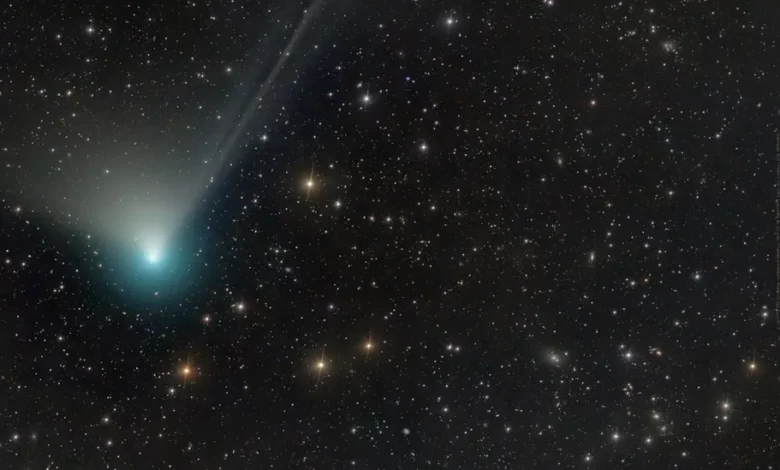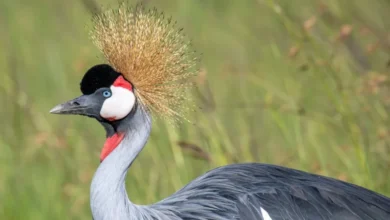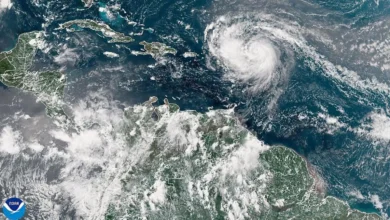Green comet approaching Earth for first time in 50,000 years

If you live north of the equator, now is the best time to see a rare bright green comet streak across the sky.
The last time the comet was spotted was 50,000 years ago.
Nasa officials said the icy visitor was first spotted in March 2022 while it was inside the orbit of Jupiter.
It has been visible to those in the Northern Hemisphere through binoculars for the past few weeks, but will be closest to Earth – and brightest – on Wednesday.
“Comets are notoriously unpredictable, but if this one continues its current trend in brightness, it’ll be easy to spot,” Nasa said on its blog earlier this month.
“It’s just possible it could become visible to the unaided eye under dark skies.”
The icy celestial body – called C/2022 E3 (ZTF), a “mouthful of a name”, according to Nasa – is making its closest approach to the sun on 12 January before making its closest approach to Earth on 2 February.
At that point it will be just about 26 million miles (42 million kilometres) away from the planet, according to the Planetary Society.
A ‘humbling’ experience
Retired high school science teacher and astrophotographer Dan Bartlett has been capturing images of the comet from his cabin near Yosemite National Park in California and calls looking at the sky a “humbling” experience.
“I’m telling you – binoculars, dark site – you’ll see something. Bring friends and you all will see something of a lifetime,” Mr Bartlett told the BBC.
He keeps two “pretty impressive scopes” on his porch in June Lake, and the clear nights and dark skies allow him to capture the impressive photos.
“Whenever you have a lake system around you, or ocean system, it causes a smoother airflow. Smoother airflow means the stars don’t twinkle as much so you get more details,” he explained.
To observers in the Northern Hemisphere without a telescope, the comet will appear like a “faint, greenish smudge in the sky”, while those with a telescope could see the comet’s dramatic visible tail, the Planetary Society said.
A bright green glow will be visible to observers in the Northern Hemisphere in the morning sky as the comet moves northwest during the month of January. Those in the Southern Hemisphere will be able to spot it in February, Nasa said.
The comet isn’t expected to be as much of a “spectacle” as the 2020 Comet NEOWISE – the brightest comet visible from the Northern Hemisphere since 1997, Nasa said.
But it’s still “an awesome opportunity to make a personal connection with an icy visitor from the distant outer solar system”, Nasa said.
The comet takes about 50,000 years to orbit the sun, so “an opportunity to see it will only come once in a lifetime”, the Planetary Society said.










